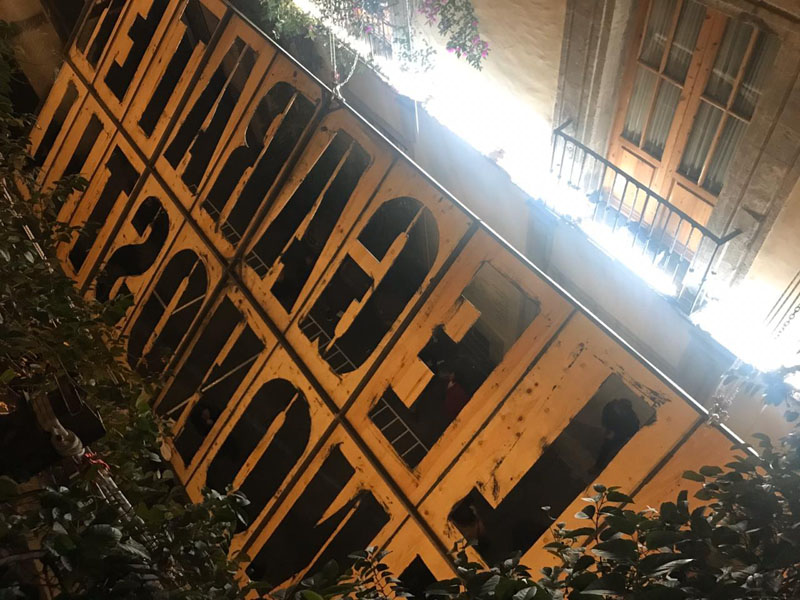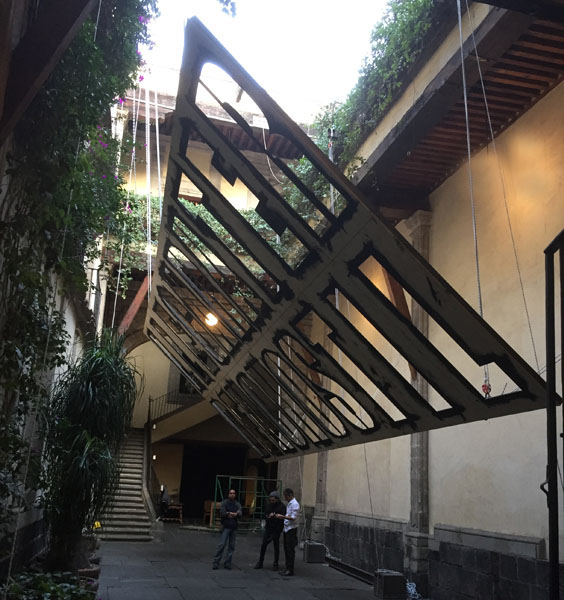Action at Hilario Galguera Gallery. Madrid, Spain.
Intervention in the gallery’s premises, in the process of remodeling prior to its opening. A horizon line was drawn, which was then remarked by an excavator.







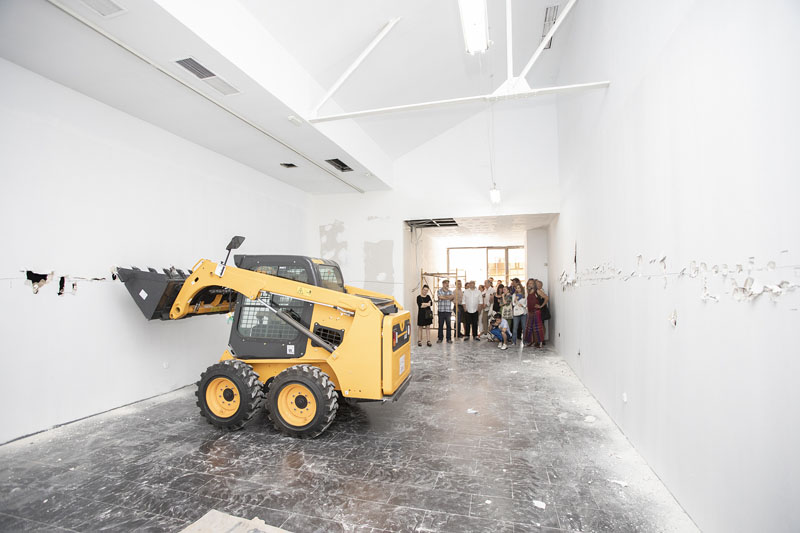
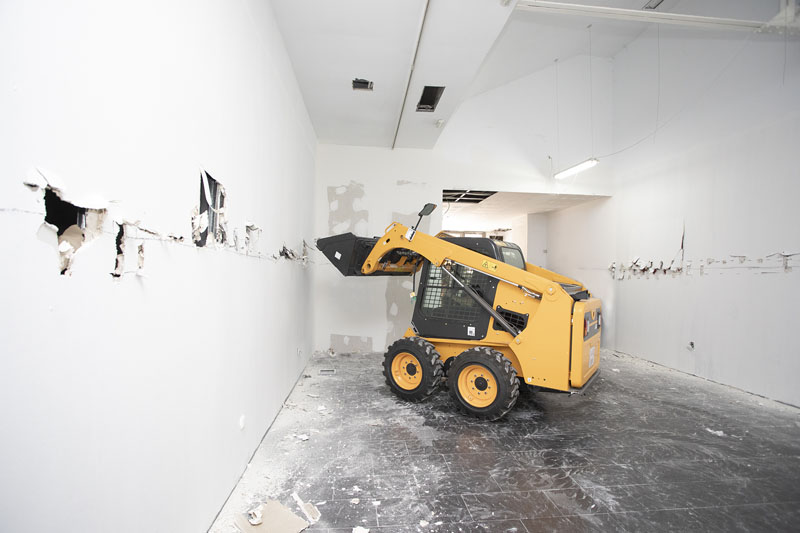
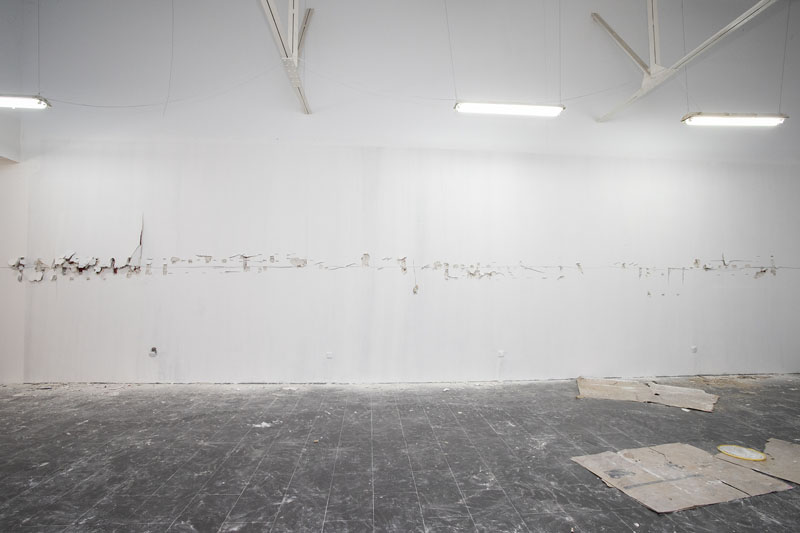
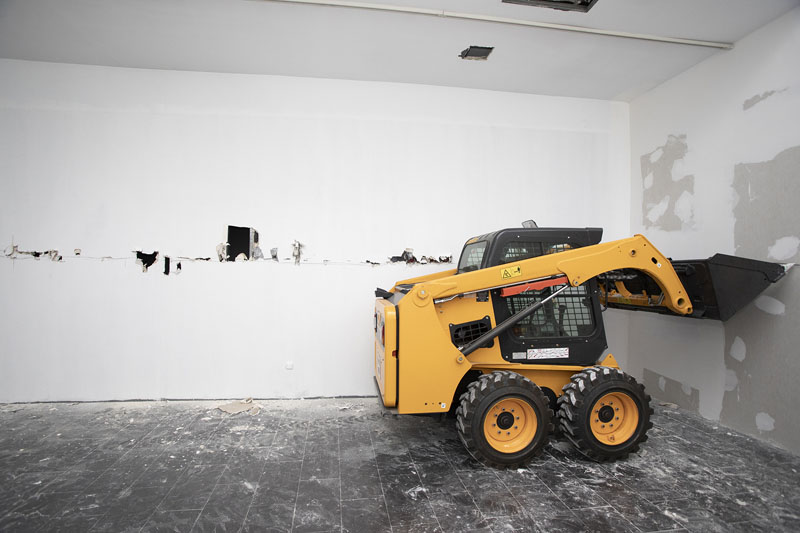
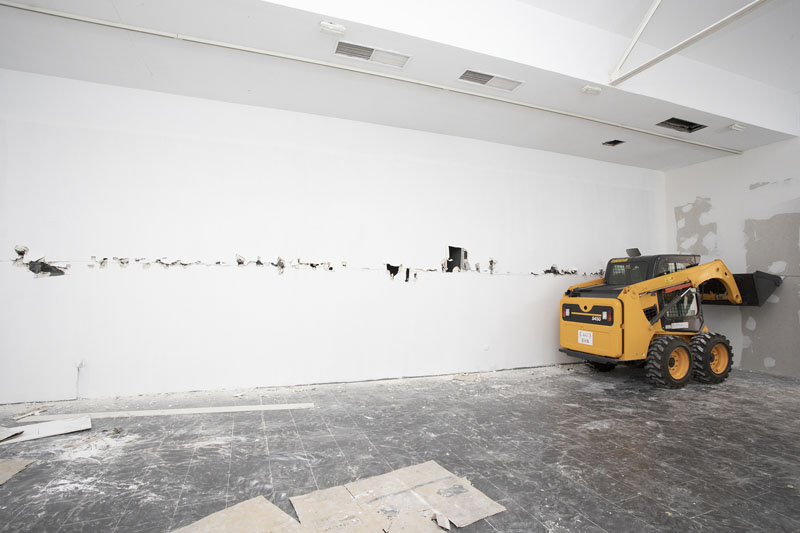
Action at Hilario Galguera Gallery. Madrid, Spain.
Intervention in the gallery’s premises, in the process of remodeling prior to its opening. A horizon line was drawn, which was then remarked by an excavator.












Moje stulecie [My Century]. 2022
Installation at Laznia Center for Contemporary Art, Gdansk, Poland.
Forty four letters cut-out on plywood, painted in a performance. Approx. 44 m long.
Statement by German Painter Max Liebermann “I cannot swallow as much as I want to vomit” (1933) translated to Polish. The work connects the phrase’s antifascist message with the reference to writer Gunther Grass, who was born in Danzig, today Gdansk, and is a cultural symbol to this city, and its book My Century, where he refers Liebermann statement and its history.
As being presented in Laznia CCA, the project integrates to an antifascist initiative that contest the ultra-right-wing central government of Poland.
During the action, the cut-out letters were used as templates to paint as a performance on a canvass that covered the wall. Each letter was painted over the other, until the pictorial surface was composed by 44 overlapped paint layers.
As a result of the action, the 44 panels that make up the installation and the painting that concentrates the phrase were obtained.
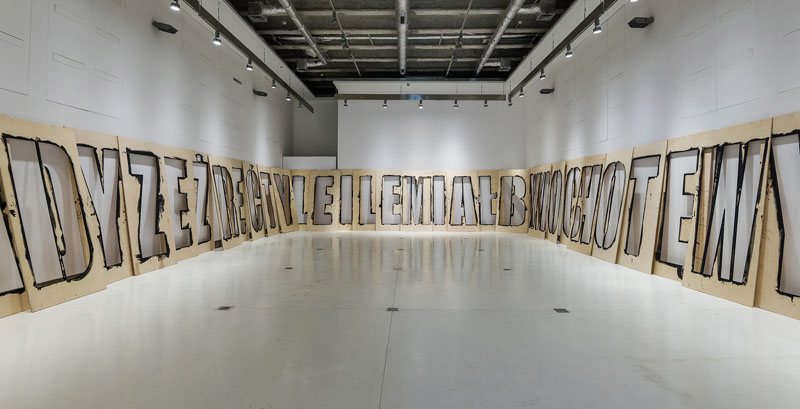
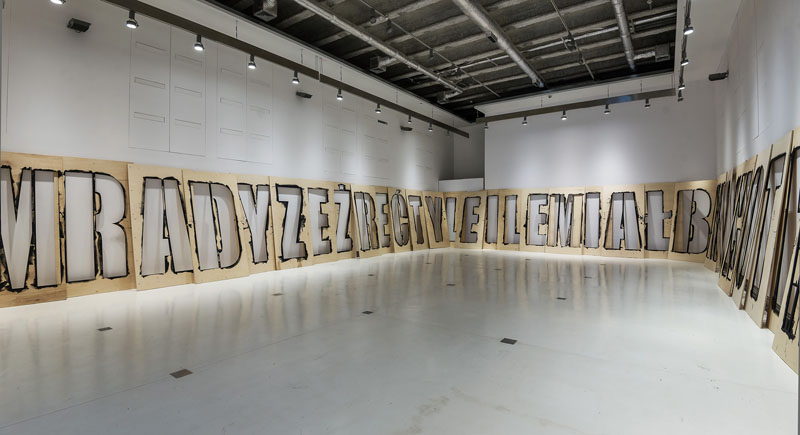

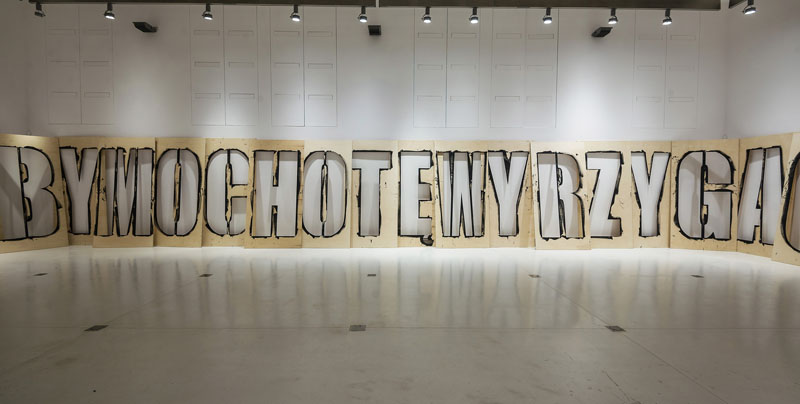
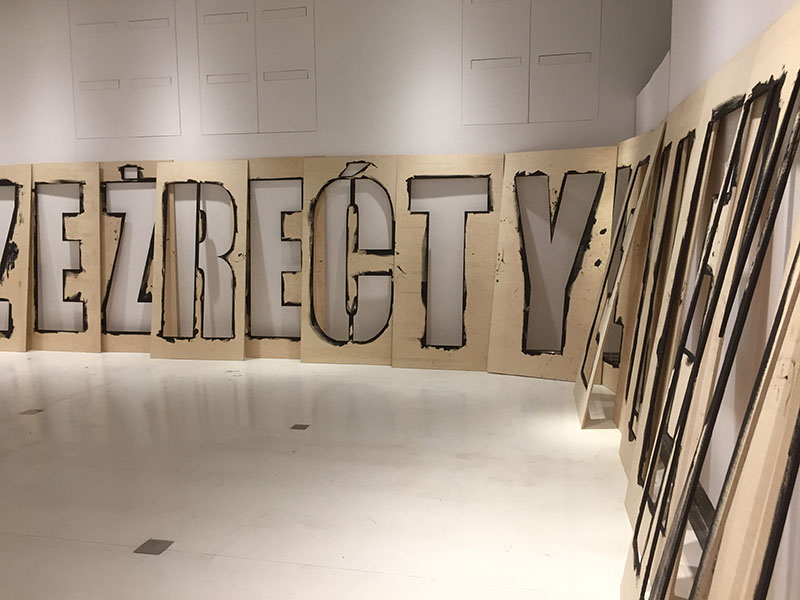

Moments of the action where letters are painted.
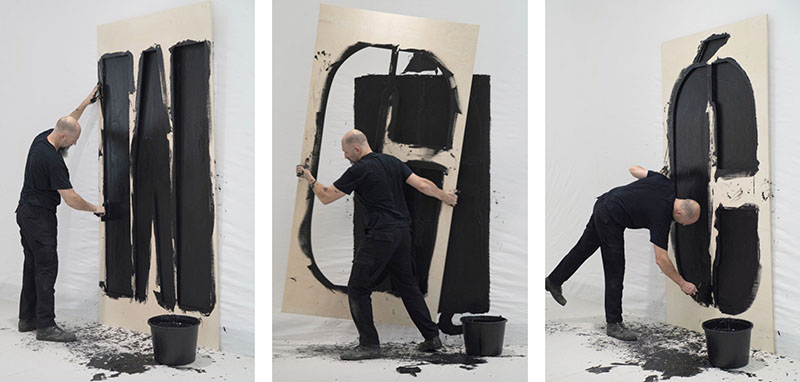
The painting resulting from the action, with 44 44 overlapped paint layers.
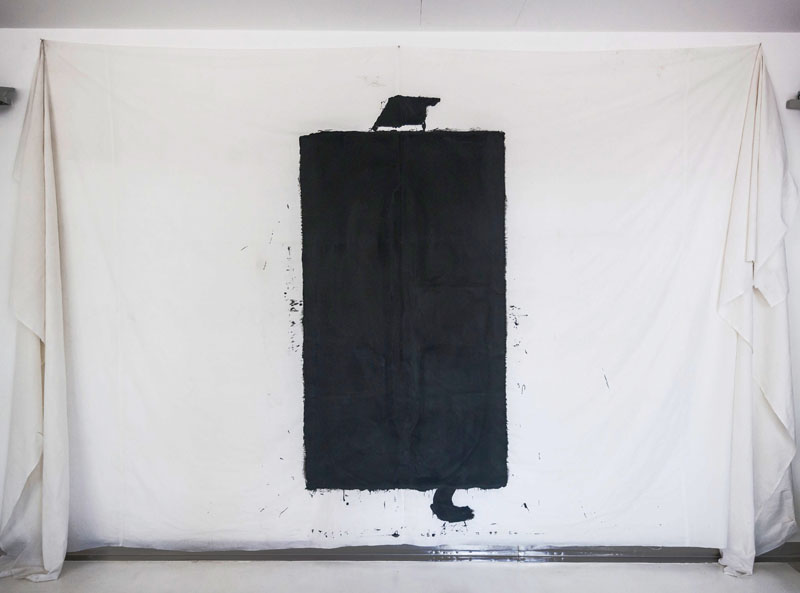
Estructura construida por albañiles y 200 cartuchos calibre 12 [Structure built by masons and 200 12-gauge cartridges], 2002
An example of precarious architecture agressively intrevened using a shotgun. Given that weapon used is typical of Latin american repression forces, references to social conflicts are inmediate: violence generated by the power focuses on impoverished social groups.
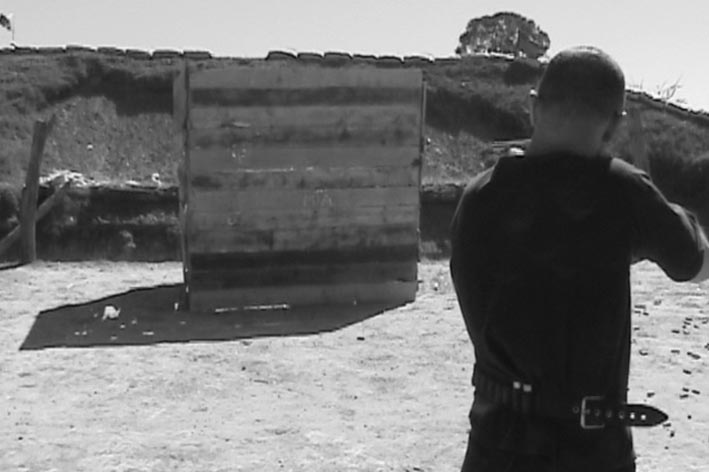

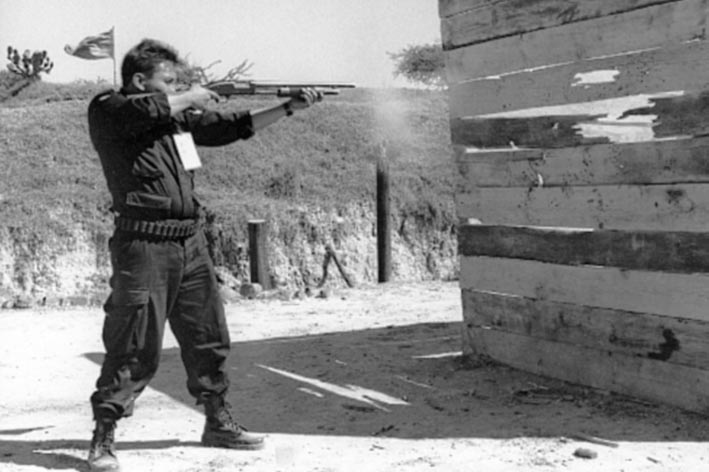
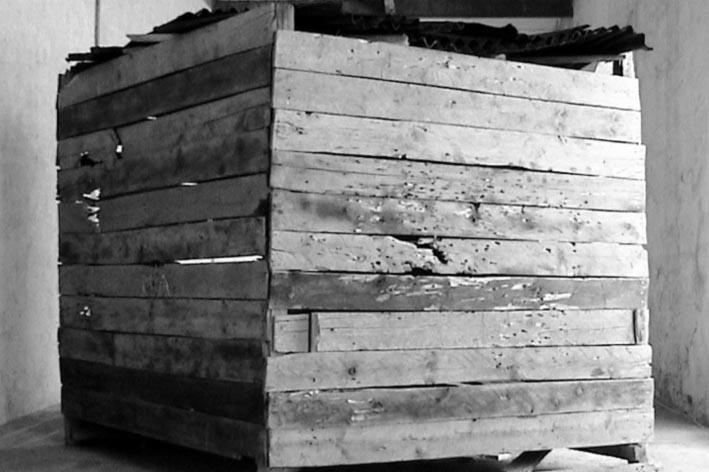
Destino incierto [Uncertain Destiny]. 2022
Installation. Museum of Abstract Art, Zacatecas, Mexico. Wood sculptures, prints (woodcut), texts, previous action.
Interdisciplinary project in which sculpture, installation, engraving, performance and literary references converge.
Five texts that allude to exile and migration function as discursive axes that the artist confronts through sculptural and printing techniques.
A performative action centred on physical effort and the uncertainty of an occupied site, emphasises this confrontation and at the same time completes the spatiality of the work.
Texts are:
acá no queda nada [nothing remains here] (Piglia)
nunca se puede regresar [one can never go back] (E.J.)
llegar a terreno hostil [to reach hostile terrain] (E.J.)
no somos iguales a nosotros mismos [we are not the same as ourselves] (Séneca)
cuidado con el país que no existe [beware of the country that does not exist] (Gelman)
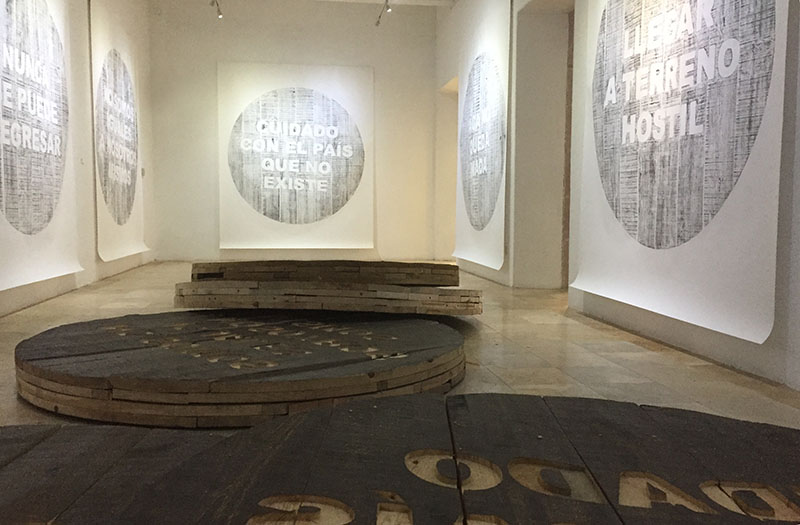

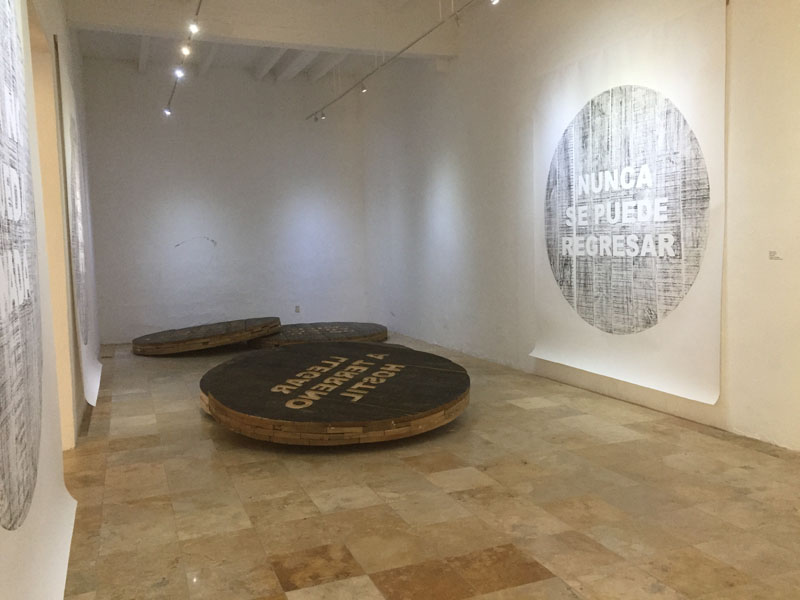
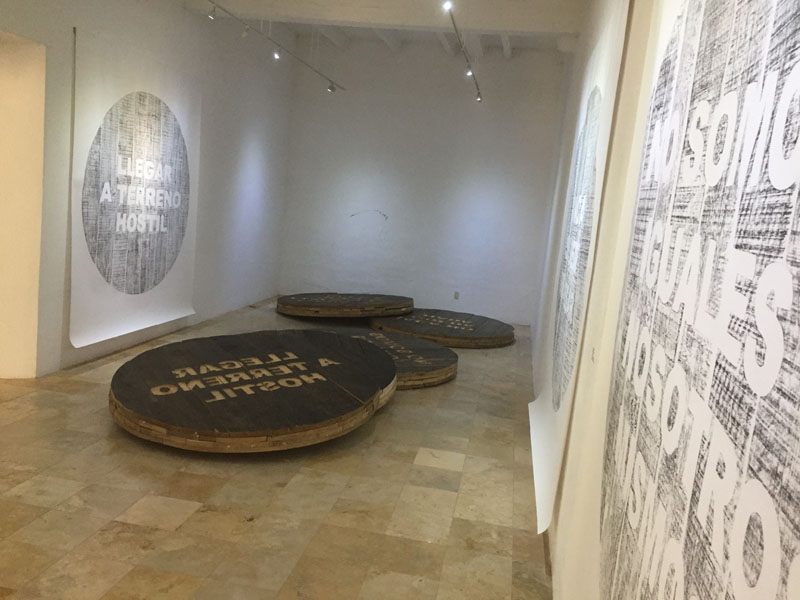
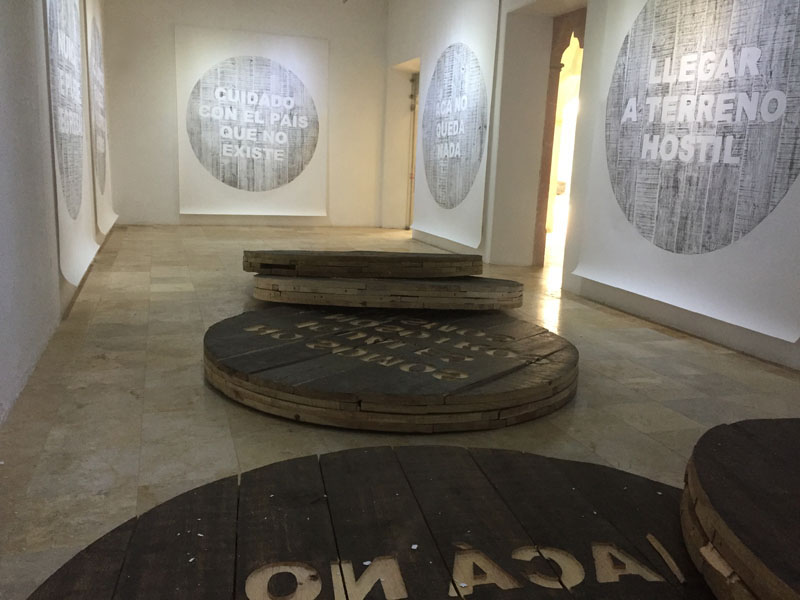

Palabras extraídas de un edificio en demolición [Words extracted from a building under demolition], 2021
Action. Cut and extraction of wall fragments from the facade of the building that was the headquarters for the now-extinct political party which used to name itself as “the only marxist party in Mexico”, located in Mexico City.
Reflection on the decadence of the Mexican political system and especially of the left-hand parties.
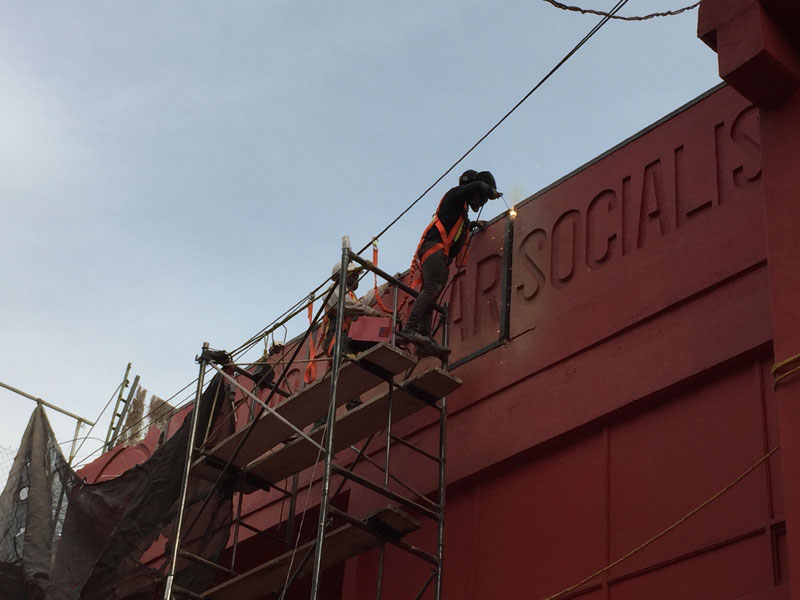
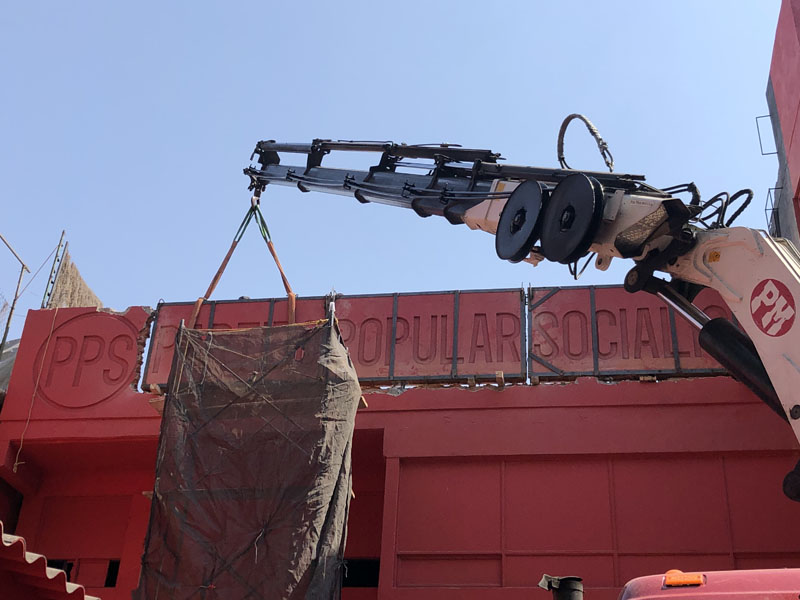



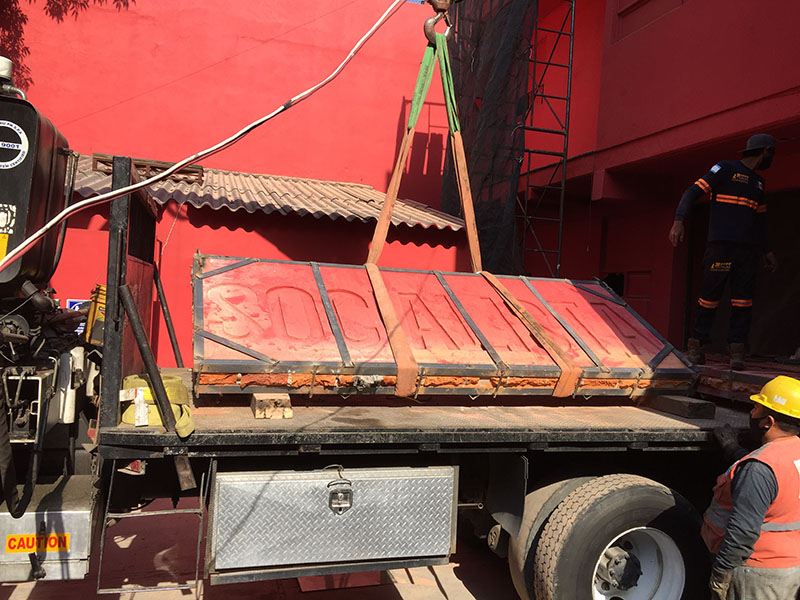
Mapa fronterizo (Border map). 2009
Six panels of plywood, carved and burnt. 220 x 732 x 6 cm
Each panel depicts a map of a Mexican state bordering the U.S.
These maps are made at different scale to fit to the panels, leading to a fragmentation of the represented border area in reference to local differences that divide the region.
The use of fire as corrosion of the mapped territory is a metaphor of the damage made on those societies by violence and corruption.

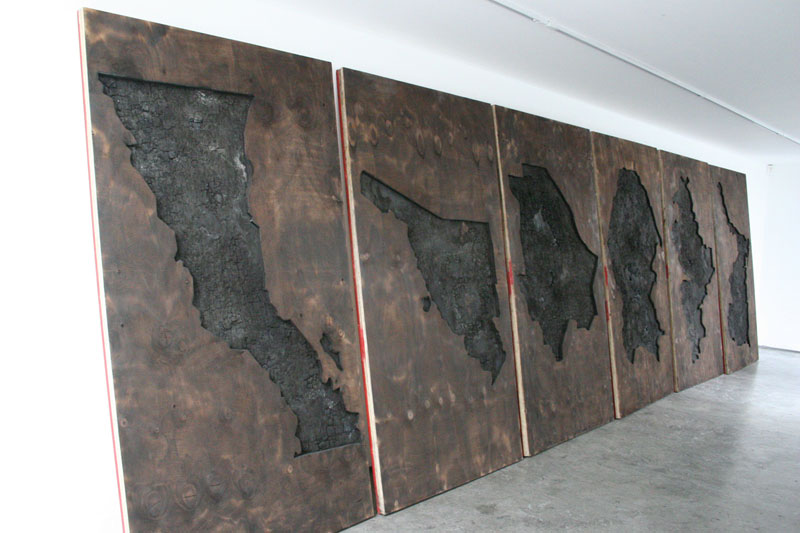


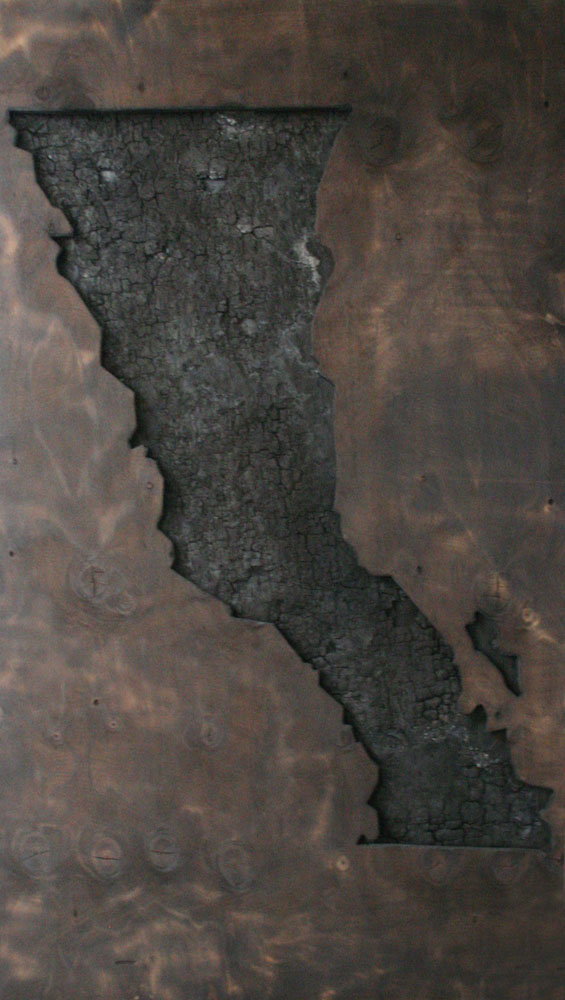
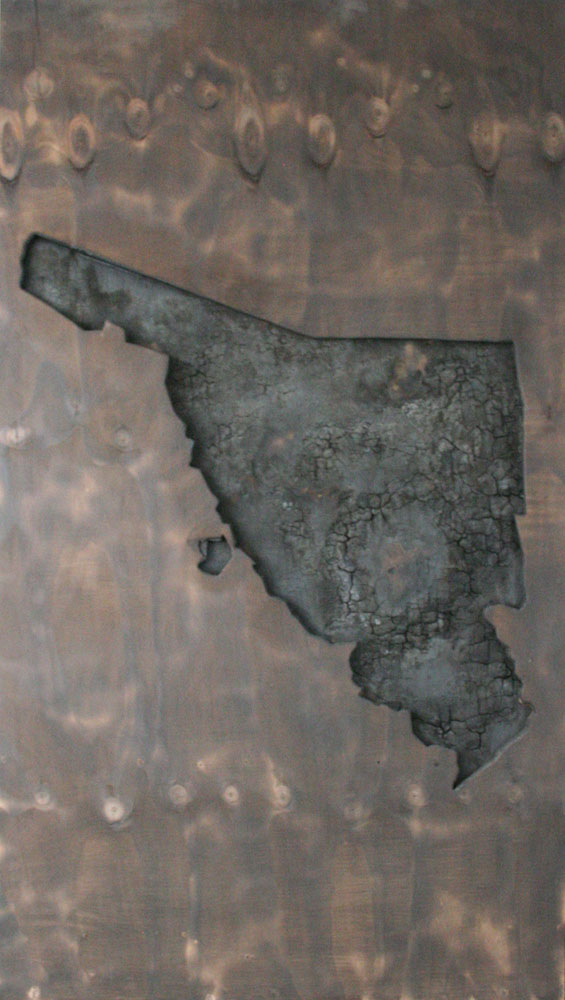
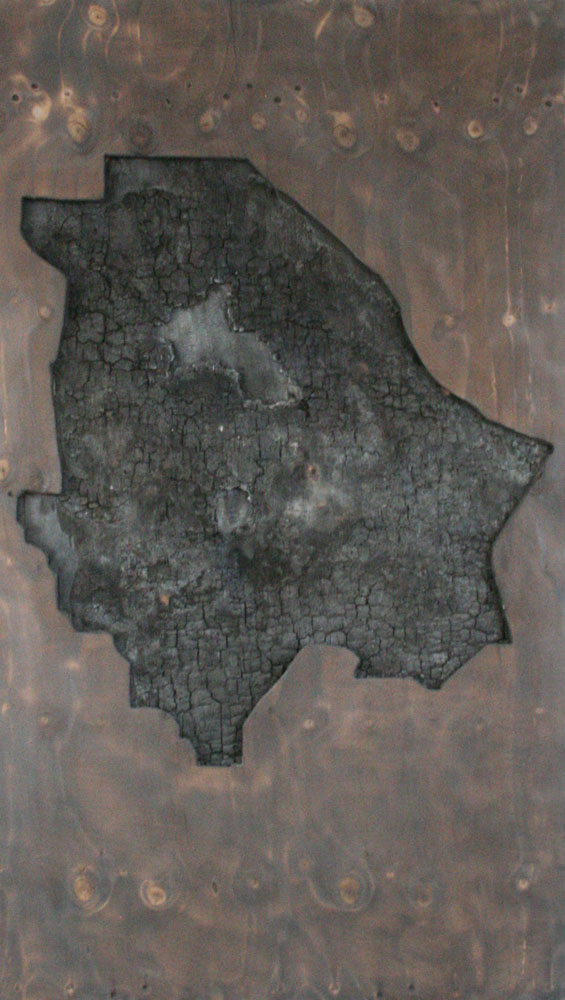
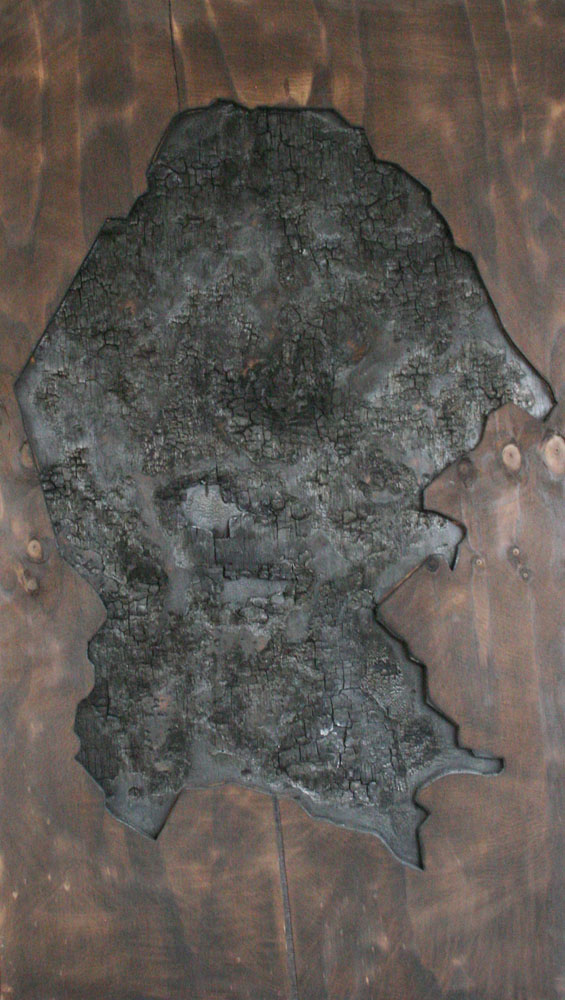



Mapa con Percusión [Map with Percussion]. 2005.
Sound action in which a Mexico City’s Historical Center map is outlined on a steel plate. The map is being drawn by steps, first with pencil, after with an awl and then with a cutting-disc. Finally, the more conflictive areas are pointed by sledge-hammer hits.
Sound resulting from scratches, grindings and hammerings is caught by several contact-microphones. The sound source is recorded, played and transformed in real time during the performance.
Done in collaboration with musician Rogelio Sosa. Ex-Teresa Arte Actual, Mexico City.




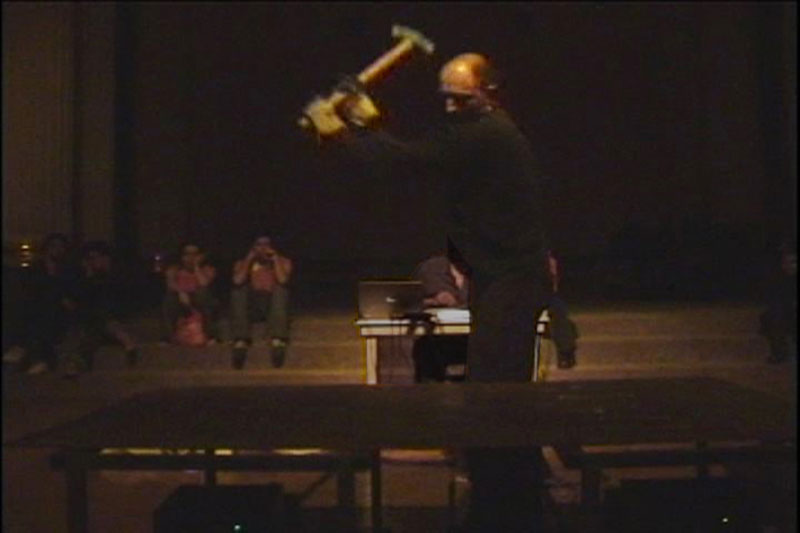

Agit-Car. 2005.
Action. Alytus, Lithuania. Performed at the First Alytus Biennale.
Soviet propaganda vehicle equipped with loudspeakers that was driven around through the city streets, casting a list of recorded slogans, said simultaneously in Lithuanian and Spanish languages.
Some of the slogans:
this or that is our / this or that is theirs / this or that was Jew / this or that was Polish / this or that was nazi / this or that was soviet
this or that is European / this or that is Yankee / this or that was national / this or that is imported / this or that is global
this or that was idealistic / this or that is realistic / this or that is corrupt / this or that is capitalist / this or that was communist
this or that is fascist / this or that is allied / this or that was independent / this or that was patriotic
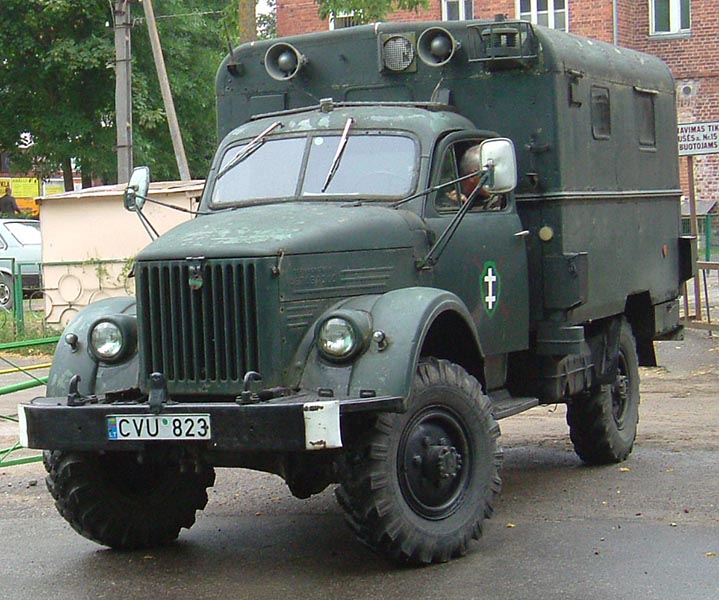
S O S. 2002
Action, architectural intervention.
An excavator with a hydraulic hammer attached to it entered the exhibition space and started hammering the floor to try to spell out the S.O.S message in Morse code, also demarcating a tarritory at the same time. The traces of the aggression remained in the space during the duration of the show.
Performed at the opening of exhibition “Sécurité”. Le Confort Moderne, Poitiers, France.

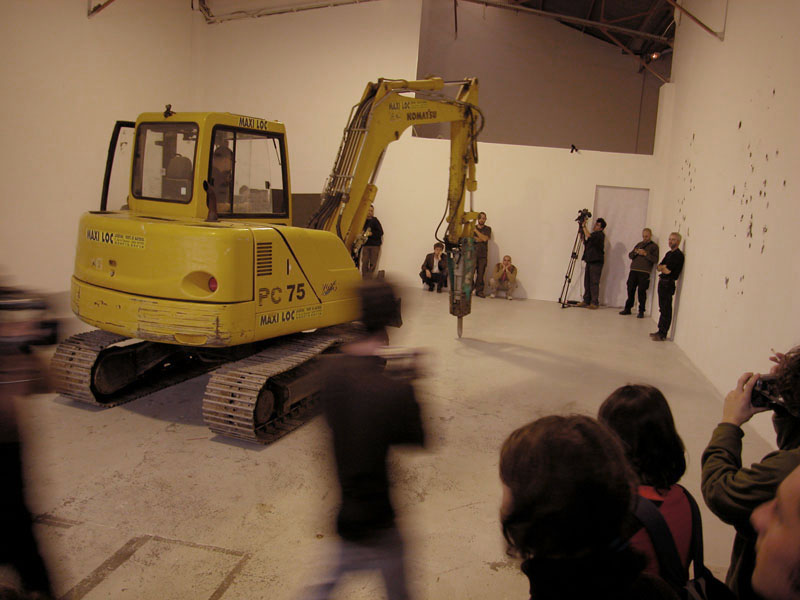
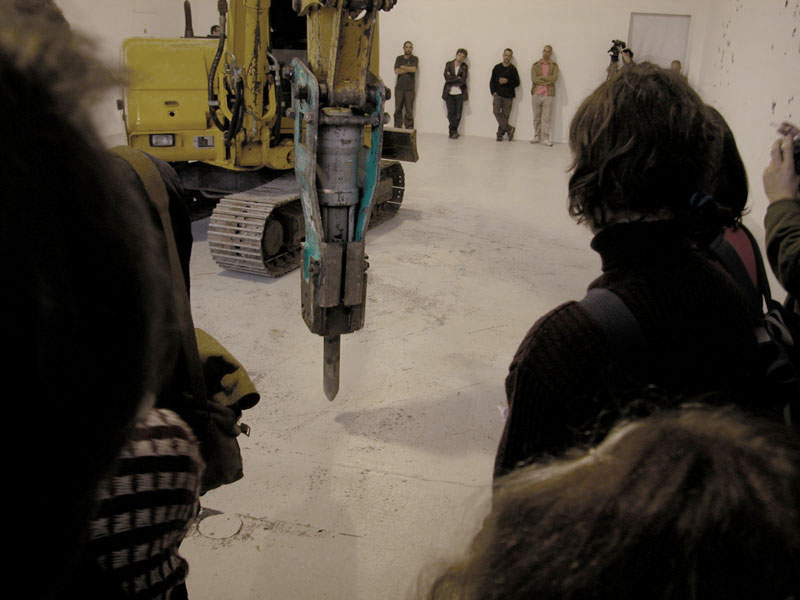
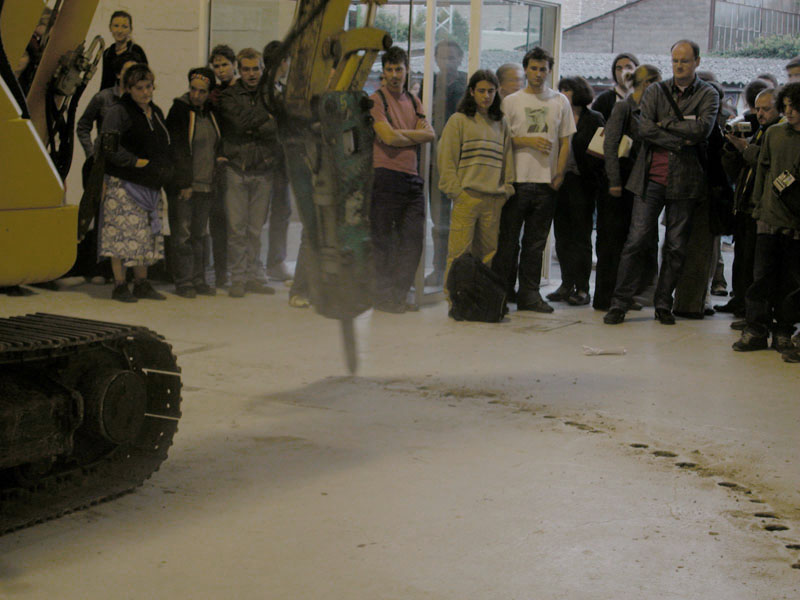

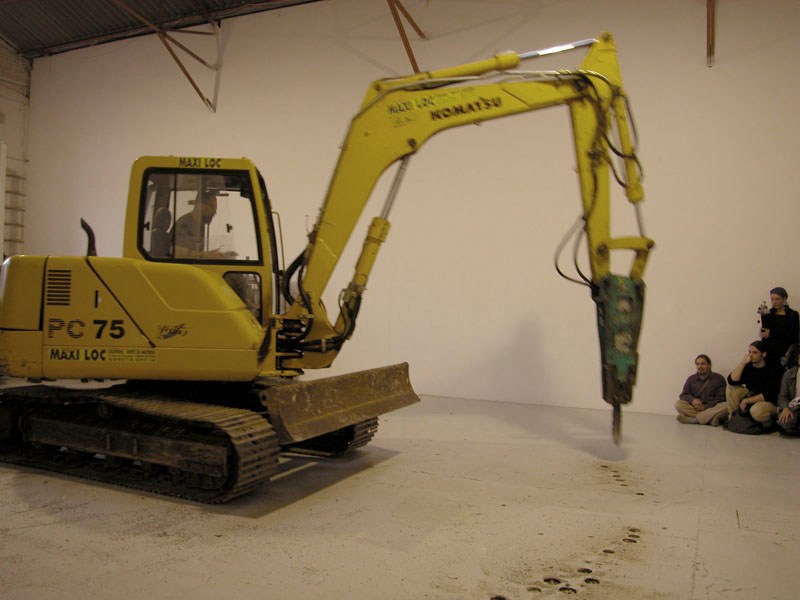
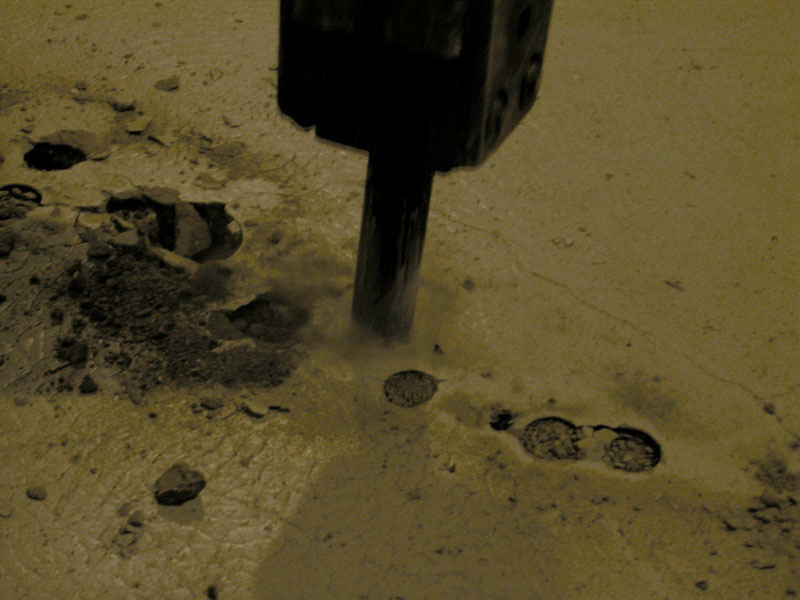

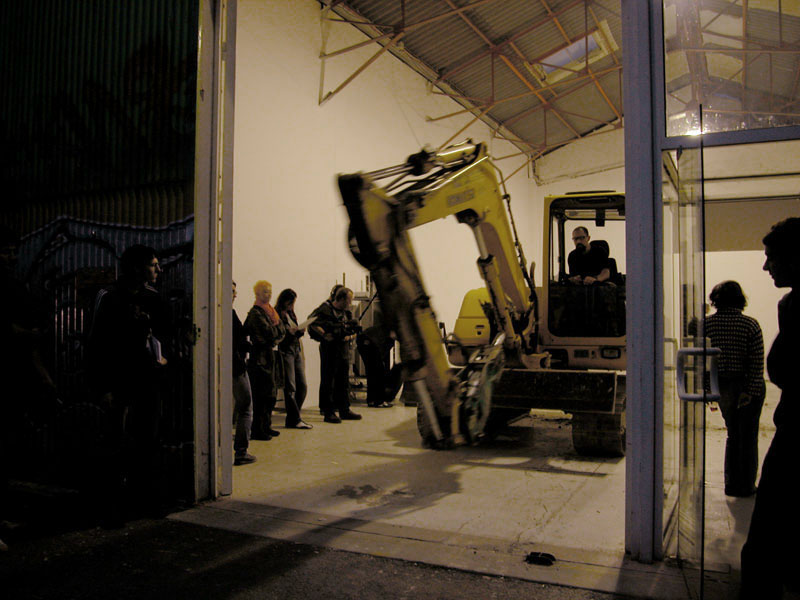
Reach Hostile Terrain. 2020
Site specific installation 6 x 6 x 12 m
Cut-out and painted plywood, steel structure, ropes, pulleys, chains.
The text alludes to the arrival of migrants to the city, making reference to both the history of the house and the current immigration situation.





